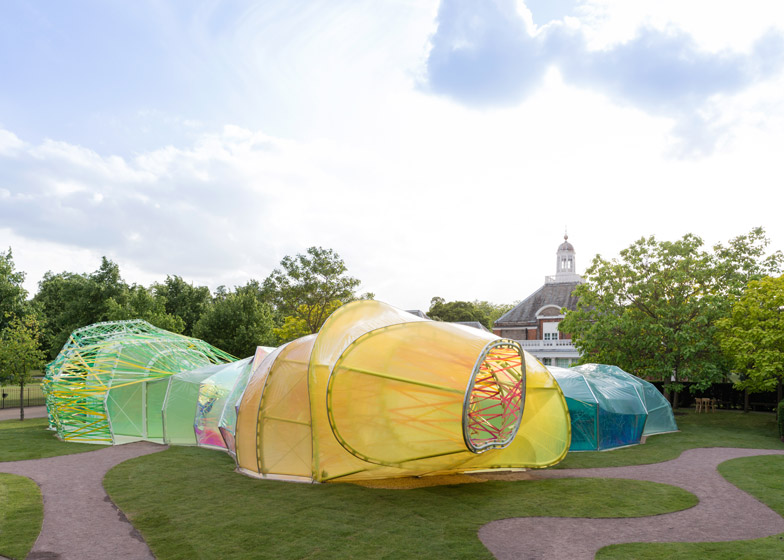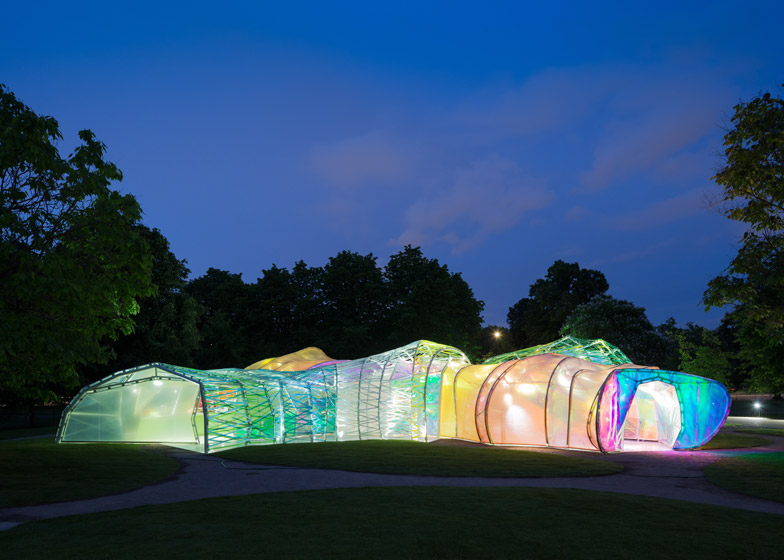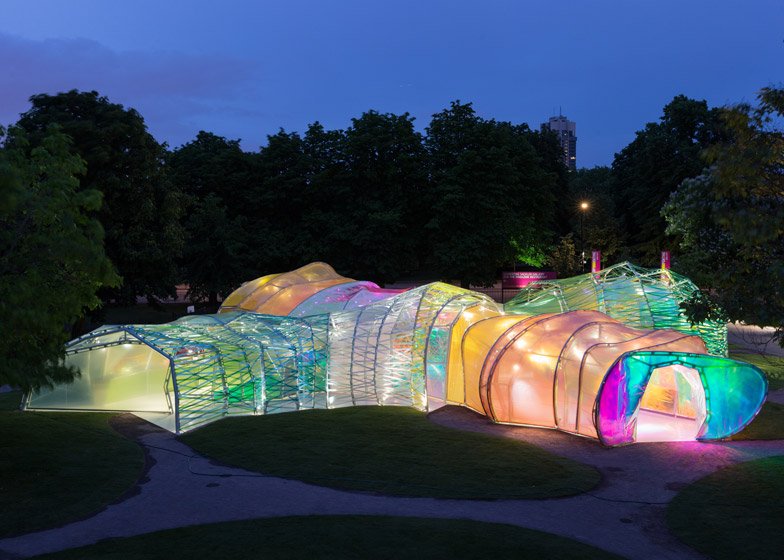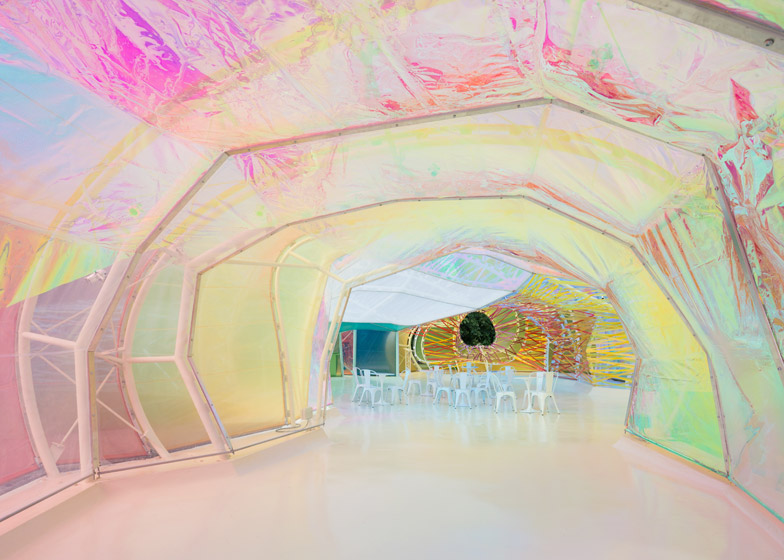Architectural photographer Iwan Baan has captured the colourful plastic-wrapped structure designed by Spanish architects SelgasCano for the Serpentine Gallery's annual pavilion programme (+ slideshow).
Opening to the public later this week, the 15th Serpentine Gallery Pavilion was designed by José Selgas and Lucía Cano, and consists of a double-layered plastic skin in a variety of colours, wrapped around a series of metal arches.
"When the Serpentine invited us to design the Pavilion, we began to think about what the structure needed to provide and what materials should be used in a Royal Park in London," said the architects.
"These questions, mixed with our own architectural interests and the knowledge that the design needs to connect with nature and feel part of the landscape, provided us with a concept based on pure visitor experience. We sought a way to allow the public to experience architecture through simple elements: structure, light, transparency, shadows, lightness, form, sensitivity, change, surprise, colour and materials."
"The spatial qualities of the pavilion only unfold when accessing the structure and being immersed within it," they added.
ETFE – a kind of fluorine-based plastic – was used to create the colourful wrapping, which is transparent in some areas and opaque in others. This material has a high resistance to corrosion, and remains very strong in different temperature ranges.
Visitors can enter the pavilion through various openings. Some comprise large arched corridors, while others are more discreet, positioned at various points around the perimeter.
"Each entrance allows for a specific journey through the space, characterised by colour, light and irregular shapes with surprising volumes," said Selgas and Cano. "This is accomplished by creating a double-layered shell, made of opaque and translucent fluorine-based plastic (ETFE) in a variety of colours."
At the centre of the pavilion is a large open space, allowing room for various events and performances to take place over the course of the summer. A cafe is also housed in the pavilion.
"We are also very much aware of the Pavilion’s anniversary in our design for the 15th annual commission. The structure therefore had to be – without resembling previous Pavilions – a tribute to them all and a homage to all the stories told within those designs," added the architects.
Related content: see all of our Serpentine Gallery Pavilions stories
In an exclusive interview with Dezeen, gallery director Julia Peyton Jones described the structure as a pavilion full of colour.
"It's a combination of different coloured plastics that reminded me of stained-glass windows when they first presented it to us," Peyton Jones said. "It's less to do with the extreme refinement of the process and more about things developing as they go along and the organic nature of their structure."
At the centre of the pavilion is a meeting space and cafe area, with four "tentacles" providing various access points. Strips and sheets of fluorine-plastic fabric (ETFE) are layered to create different lighting effects when the sunlight shines through the walls.
Like its predecessors, the 2015 Serpentine Gallery Pavilion is occupying a site in front of the gallery in London's Kensington Gardens.
The annual pavilion commission is awarded to different architects each year with the intention of providing the chance for them to create their first built structure in England.
Previous pavilion designers have included Peter Zumthor, Herzog & de Meuron, Zaha Hadid, SANAA, and Frank Gehry. According to the gallery, the pavilion is one of the most visited architectural and design exhibitions in the world.
The 2015 Serpentine Pavilion will open on 25 June and close on 18 October. It will host a number of parties and public talks, as well as a series of evening events sponsored by fashion brand COS.
To mark the 15th anniversary of the pavilion programme, Dezeen will be publishing a series of exclusive interviews with director Julie Payton Jones, looking back at each of the designs.
Photography is by Iwan Baan.




